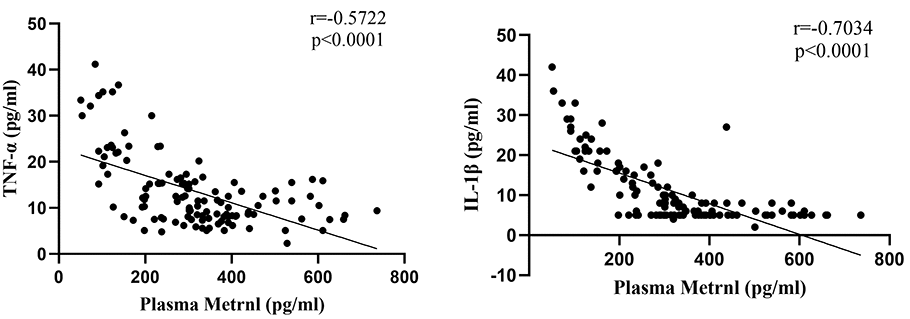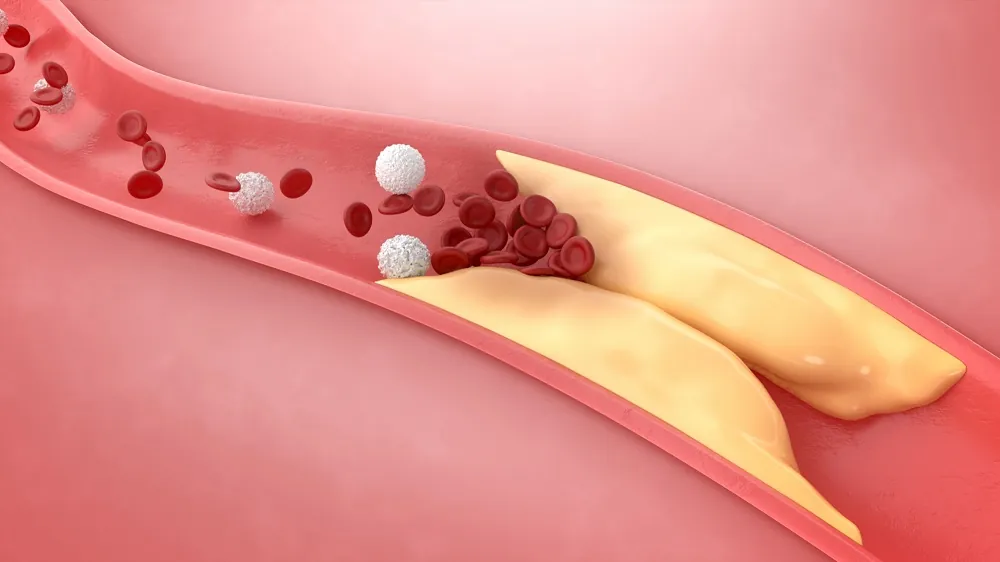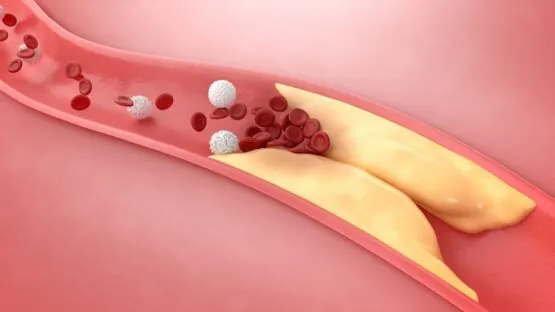Researchers publishing in Aging have pinpointed a protein that increases after exercise and is associated with a reduced risk of coronary artery disease.
The deadliest disease has inflammatory roots
Coronary artery disease directly kills more people than anything else in the world [1]. Its causes stem from atherosclerosis, the buildup of arterial plaque. Among its causes are the accumulation of macrophages that turn into foam cells [2], which are connected to inflammation and the dysregulation of bodily fats (dyslipidemia). As expected, a human trial has found that exercise is indeed somewhat effective against its development and risk factors [3].
Many of the inflammatory processes involved in coronary artery disease have been elucidated in previous literature. For example, high LDL cholesterol is associated with activation of the PSCK9 gene, which leads to increased activation of the inflammatory factors TNF-α and IL-1ß [4] and makes oxidative stress worse, thus leading to the formation of arterial plaques [5].
Some recent work has found a direct link between coronary artery disease and a specific protein, meteorin-like protein (Metrnl), which increases after exercise [6]. Metrnl has been documented to have anti-inflammatory properties and favor fat metabolism in animal models [7]. A human study has found that greater serum Metrnl is associated with a reduced risk of coronary artery disease [8], and a mouse study has found that this is increased by exercise [9].
Documenting the effects in people
This study was built to confirm and expand upon that previous work, recruiting a total of 120 volunteers with an average age slightly over 60. Half of the participants had coronary artery disease, and half did not. As expected, the participants with this disease had significantly greater inflammatory biomarkers along with higher LDL cholesterol and roughly half the serum Metrnl of the healthy participants.
While it was not associated with some biomarkers, less Metrnl was found to be associated with more inflammatory cytokines, more LDL, and less HDL. This was also found to be significantly associated with disease severity: in general, the less Metrnl someone had, the more dangerous that person’s atherosclerosis was found to be.

The participants with coronary artery disease were then divided between a 12-week exercise group and a control group. After the 12 weeks, as expected, Metrnl went up and inflammatory cytokines went down. The same results were confirmed in mice, which found that the increased Metrnl was largely concentrated in skeletal muscle fibers.
Further work with human vascular endothelial cells (HUVECs) found that inducing oxidative stress into these cells was mitigated by applying Metrnl, restoring their ability to properly conduct normal cellular respiration. The inflammatory pathway involved was found to be significantly reduced.
The researchers hold that this is likely to be the fundamental, causative reason why Metrnl is negatively associated with inflammatory cytokines and coronary artery disease. They recommend that future researchers study this compound as a therapeutic agent, potentially giving sufferers of this deadly disease a shortcut to better health.
Literature
[1] Shao, C., Wang, J., Tian, J., & Tang, Y. D. (2020). Coronary artery disease: from mechanism to clinical practice. Coronary Artery Disease: Therapeutics and Drug Discovery, 1-36.
[2] Medina-Leyte, D. J., Zepeda-García, O., Domínguez-Pérez, M., González-Garrido, A., Villarreal-Molina, T., & Jacobo-Albavera, L. (2021). Endothelial dysfunction, inflammation and coronary artery disease: potential biomarkers and promising therapeutical approaches. International journal of molecular sciences, 22(8), 3850.
[3] Pedersen, L. R., Olsen, R. H., Anholm, C., Astrup, A., Eugen-Olsen, J., Fenger, M., … & Prescott, E. (2019). Effects of 1 year of exercise training versus combined exercise training and weight loss on body composition, low-grade inflammation and lipids in overweight patients with coronary artery disease: a randomized trial. Cardiovascular diabetology, 18, 1-13.
[4] Ding, Z., Pothineni, N. V. K., Goel, A., Lüscher, T. F., & Mehta, J. L. (2020). PCSK9 and inflammation: role of shear stress, pro-inflammatory cytokines, and LOX-1. Cardiovascular research, 116(5), 908-915.
[5] Förstermann, U., Xia, N., & Li, H. (2017). Roles of vascular oxidative stress and nitric oxide in the pathogenesis of atherosclerosis. Circulation research, 120(4), 713-735.
[6] Bae, J. Y. (2018). Aerobic exercise increases meteorin-like protein in muscle and adipose tissue of chronic high-fat diet-induced obese mice. BioMed research international, 2018.
[7] Jung, T. W., Lee, S. H., Kim, H. C., Bang, J. S., Abd El-Aty, A. M., Hacimüftüoglu, A., … & Jeong, J. H. (2018). METRNL attenuates lipid-induced inflammation and insulin resistance via AMPK or PPARd-dependent pathways in skeletal muscle of mice. Experimental & molecular medicine, 50(9), 1-11.
[8] Liu, Z. X., Ji, H. H., Yao, M. P., Wang, L., Wang, Y., Zhou, P., … & Lu, X. (2019). Serum Metrnl is associated with the presence and severity of coronary artery disease. Journal of cellular and molecular medicine, 23(1), 271-280.
[9] Javaid, H. M. A., Sahar, N. E., ZhuGe, D. L., & Huh, J. Y. (2021). Exercise inhibits NLRP3 inflammasome activation in obese mice via the anti-inflammatory effect of meteorin-like. Cells, 10(12), 3480.




